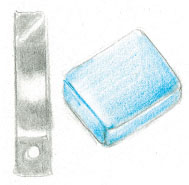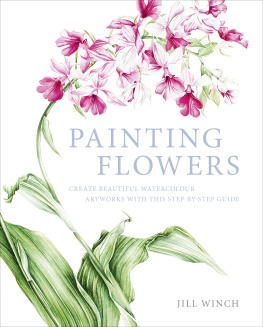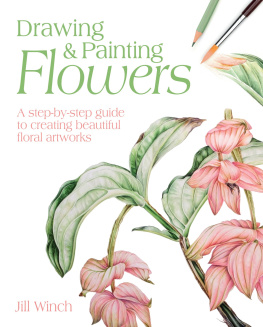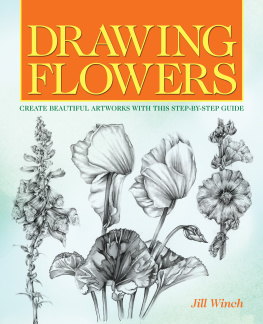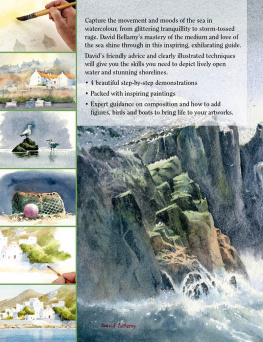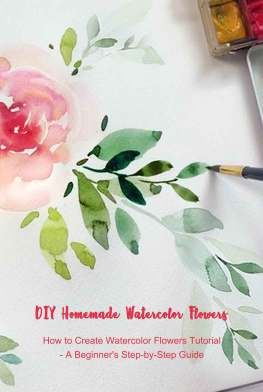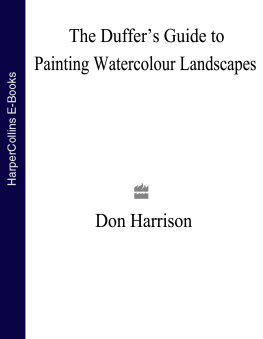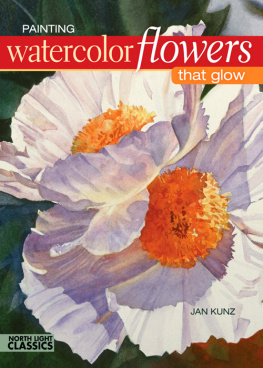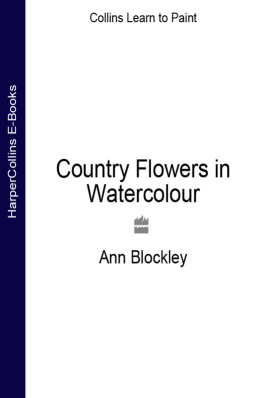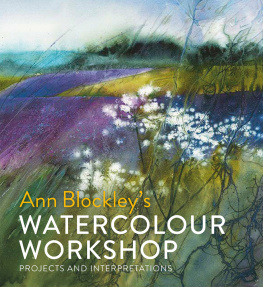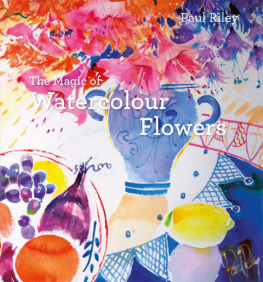

This edition published in 2020 by Arcturus Publishing Limited
26/27 Bickels Yard, 151153 Bermondsey Street, London SE1 3HA
Copyright Arcturus Holdings Limited
All rights reserved. No part of this publication may be reproduced, stored in a retrieval system, or transmitted, in any form or by any means, electronic, mechanical, photocopying, recording or otherwise, without prior written permission in accordance with the provisions of the Copyright Act 1956 (as amended). Any person or persons who do any unauthorised act in relation to this publication may be liable to criminal prosecution and civil claims for damages.
INTRODUCTION
This book is designed to help you get started on painting floral subjects and then to develop your skills. Of course, a love of flowers is a good starting point but practice is key to achieving success, and although it might be tempting to skip the exercises at the beginning of the book and get on with an exciting floral portrait they should not be ignored as they will start you on the right road to lots of enjoyment and artistic satisfaction.
Watercolour is the most popular medium for painting flowers, and although it can be considered challenging you will find that you can achieve success by using the correct tools and techniques. The best way to tackle it is to start with exercises that are easily achievable, rather than trying something difficult and becoming discouraged. I find my students get quite stressed about ruining a piece of paper they are working on, but they neednt be; there may be many pieces of discarded paper along your road to success, but with each piece more lessons will have been learned about what you do and dont do. There is a process to work through and skills gained by practising will give you the confidence needed to move on to the next stage making a painting to be proud of.
Finding a regular class to join and keeping an eye out for more specialized workshops can be helpful in the understanding of this huge subject. The Internet can be an excellent source of information and on a smaller scale a local art shop can often advise on nearby art societies that hold painting sessions. Art groups often invite artists to give talks and demonstrations from which there is much to be learnt and joining a group brings many other benefits, such as meeting like-minded people and making friends as well as picking up tips on painting. I am still in contact with people I met in a painting group I attended 20 years ago and I know that the friendships made within the classes I hold now are invaluable to those attending.
However, if you join a group, take care not to constantly compare your work with that of other members. In many instances the only person holding us back is ourselves and our own lack of confidence; someone in the group who seems much more skilled than you could ever be has probably just had a lot more practice.
As you become more ambitious, finding a teacher with whom you have a good rapport is important. Having been very lucky with my teacher when I was first studying botanical art, I know how important it is to have someone who encourages you and is also able to show you how to paint; someone who is not only an excellent artist but also an excellent teacher (thank you, Isabel).
Exhibitions are an excellent form of education, as looking at how botanical artists have used their chosen medium will help you form your own ideas of how you would like to use your watercolour or pencils to achieve the results you admire. In time, you may find the confidence to enter your own work into an exhibition.
Looking through books of botanical art is a lovely way to find out how other artists have applied their paint and arranged their compositions. I feel you cannot have too many books and I treasure all of mine for when I can find some quiet time to immerse myself in the wonderful world of painting flowers.
Jill Winch

Materials and equipment
Over the next few pages we shall look at the materials and equipment you will need for your flower paintings. These include pencils for your initial drawings, along with brushes, coloured pencils, paints and papers. The range of art materials available in shops and online is wide and consequently rather bewildering to a novice artist, so it is useful to understand what you want for your particular purposes before you start shopping and perhaps waste your money buying unsuitable items. Generally speaking, buying the best materials is the ideal thing to do, but if you are on a budget there are ways to spend your money wisely rather than wasting it on poor-quality materials. We shall also discuss the equipment involved in painting flowers in particular, including vessels for holding them.

Pencils
In terms of mark-making, pencils can vary according to brand and over time you will discover your own preference. The standard graphite pencil comes in a range of hard or soft leads, with H1 to H9 progressively harder and B1 to B9 progressively softer. HB is the mid-point. For the purposes of this book I recommend you acquire the range from 2H to 2B. The HB is a good all-rounder, ideal for your initial drawings and easily erased before you apply your first watercolour wash.
Other types of pencil on offer include clutch pencils, which I favour. These are available in sizes 0.3, 0.5 and 0.7 and the graphite leads can be changed according to what is required, so rather than have several pencils you can use just one with different lead strengths. I prefer a 0.5 holder, usually with either an HB or 2H lead inserted, filed down with an emery board to achieve a fine point. The thickness of this lead gives me the stability I require.
Propelling pencils are similar and cheaper to buy, but they usually contain quite a fine lead and the leads are more difficult to change, so the saving on price is not really worth making.

Left: Clutch pencil, middle: standard graphite pencil, right: propelling pencil
Pencil sharpener
I use two types of pencil sharpener: desktop and a small hand-held sharpener. These both come in various styles by different manufacturers and your choice will be down to personal preference and availability.

Eraser
I prefer to use a small blue putty rubber, for which there is a grey equivalent from a different manufacturer. These are extremely pliable and wonderful for rolling over your initial drawing to remove excess graphite. There is a white one that is more generally available, but you will find this is not as elastic as the blue or grey one.
A recent find is the Design eraser made by Caran dAche, which is perfect for removing graphite pencil or coloured pencil completely.
